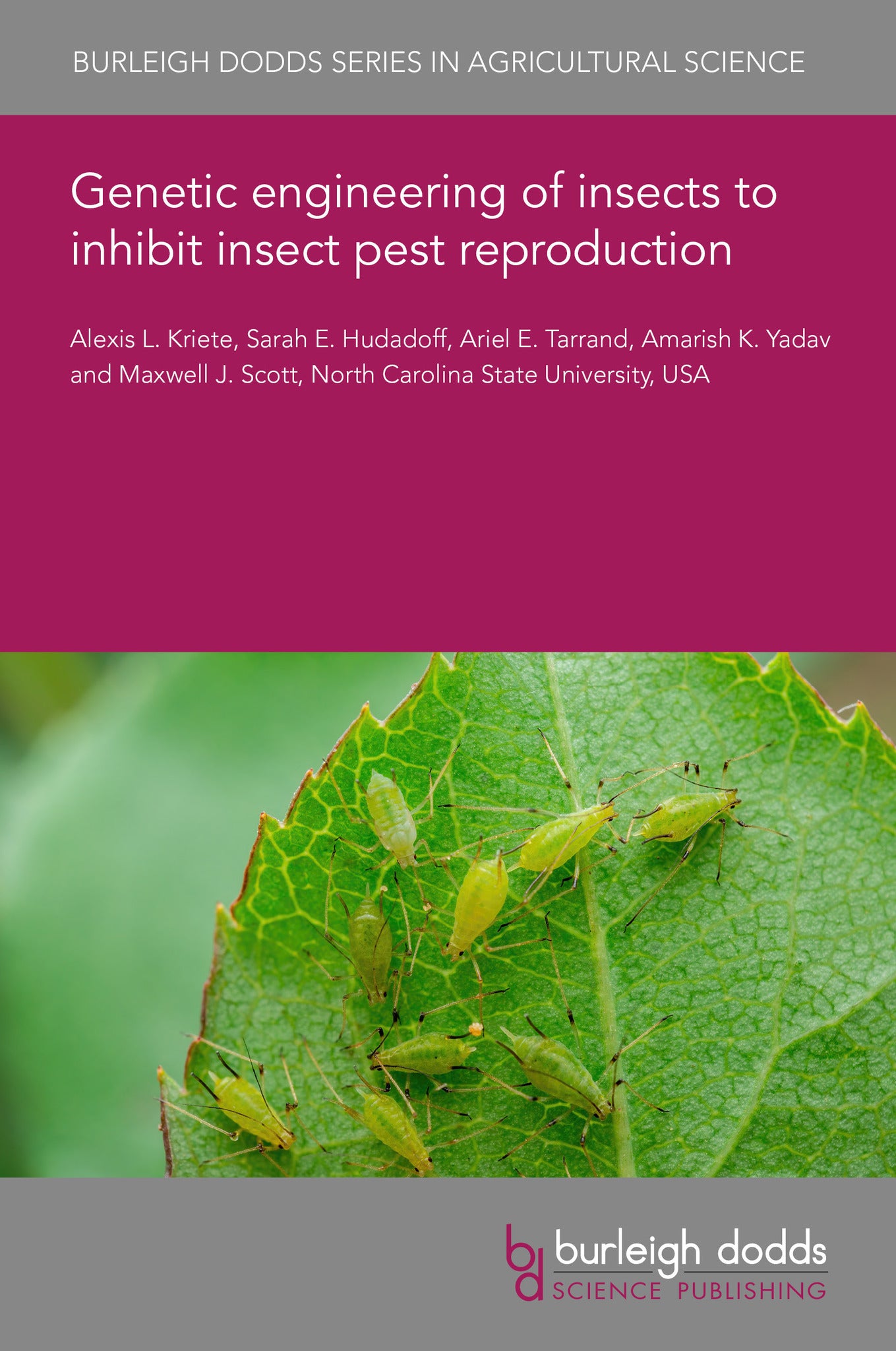We're sorry. An error has occurred
Please cancel or retry.
Genetic engineering of insects to inhibit insect pest reproduction

Some error occured while loading the Quick View. Please close the Quick View and try reloading the page.
Couldn't load pickup availability
- Format:
-
03 April 2025

This chapter reviews key few methods of genetic biocontrol focusing on those systems that have been developed for crop insect pests. These include “sterile release systems” where e.g. sterilized males produce sperm which carries dominant lethal mutations that result in their offspring failing to develop or prevents functional sperm from being produced. We contrast these systems with “fertile release systems” which involve releasing insects that are capable of producing some offspring but with genetic defects that e.g. mean that fewer females survive. The chapter discusses the varied strengths and weaknesses of these different systems.

TECHNOLOGY & ENGINEERING / Pest Control, Pest control / plant diseases, TECHNOLOGY & ENGINEERING / Agriculture / Sustainable Agriculture, TECHNOLOGY & ENGINEERING / Agriculture / Agronomy / Crop Science, Agronomy and crop production, Sustainable agriculture

- 1 Introduction
- 2 Sterile release systems: the sterile insect technique
- 3 Sterile release systems: precision-guided sterile insect technique
- 4 Sterile release systems: release of insects carrying a dominant lethal/female-specific release of insects carrying a dominant
- 5 Fertile-release systems: X-poisoning, X-shredder, Y-linked editor, and homing gene drive approaches
- 6 Case study: split homing gene drive in an agricultural pest (
- 7 From the lab to the field: risk assessment and cage and open-field trials
- 8 Conclusion and future trends
- 9 Where to look for further information
- 10 Acknowledgments
- 11 References



